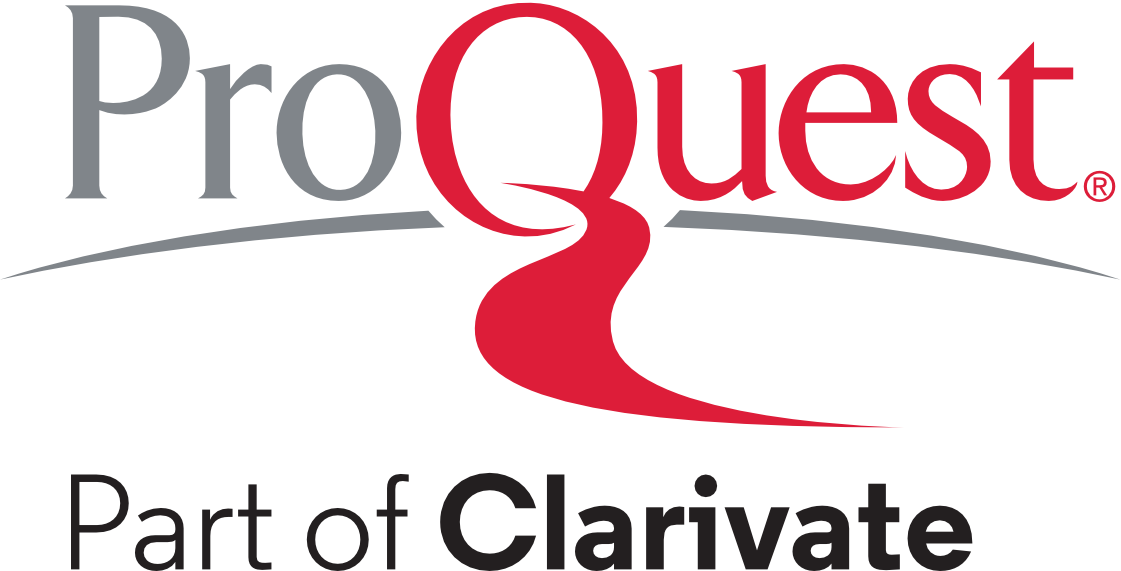Rdislex: rapid test for the risk of dyslexia in pre-readers and beginning readers. Pilot test
DOI:
https://doi.org/10.17981/JACN.4.1.2023.4Keywords:
Dyslexia, Screening, Literacy, Pre-readers, Beginning ReadersAbstract
Dyslexia is a specific learning disorder with a prevalence of 5-17%, in all languages of the world, characterized by difficulty in precise word recognition, with an impact on fluency and reading comprehension, with emotional and social consequences. in the medium and long term, such as anxiety, depression and school failure. Objective: Design a rapid screening tool for risk of development of dyslexia for pediatric and school use. Method: An instrument composed of 7 test items or stimuli was developed. A total of 138 infants, between 5-7 years and 11 months, without neurological pathologies or visual or hearing deficits, who attended pediatric health check-ups or pre-school or primary school in Bariloche, Argentina, participated. Results: The designed tool showed very good psychometric indices and correlation with the TDR and LEE tests, which would allow a first approximation to a predictive tool for reading performance risk. Conclusions: The test in its pilot stage made it possible to compare the performance of children in phonological awareness, fluency and working memory, predictors of written language learning. The expansion of the sample and its validation will allow easy access to its use in schools or pediatric offices.
Downloads
References
Aiken, L. (1980). Content validity and reliability of single items or questionnaires. Educational and Psychological Measurement, 40(4), 955–959.
https://doi.org/10.1177/001316448004000419
Anastasi, A. & Urbina, S. (1997). Psychological testing [7 ed.]. Prentice Hall/Pearson Education.
APA. (2014). DSM-5: Manual diagnóstico y estadístico de los trastornos mentales [5 Ed.] American Psychiatric Association Publishing.
Boix, C.; Roca, E.; Carmona, J.; Colomé, R.; López, A.; Sanguinetti, A.; Caro, M. y Sans, A. (Coord.). (2010). El aprendizaje en la infancia y adolescencia: Claves para evitar el fracaso escolar. Hospital Sant Joan de Déu.
Carrillo, M.; Alegría, J.; Miranda, P. y Sánchez, N. (2011). Evaluación de la dislexia en la escuela primaria: Prevalencia en español. Escritos de Psicología, 4(2), 35–44.
https://doi.org/10.24310/espsiescpsi.v4i2.13317
Clark, L. & Watson, D. (1995). Constructing validity: Basic issues in objective scale development. Psychological Assessment, 7(3), 309–319.
https://doi.org/10.1037/1040-3590.7.3.309
Clark, K.; Helland, T.; Specht, K.; Narr, K.; Manis, F.; Toga, A. & Hugdahl, K. (2014) Neuroanatomical precursors of dyslexia identified from pre-reading through to age 11, Brain, 137(12), 3136–3141.
https://doi.org/10.1093/brain/awu229
Cuetos, F.; Arribas, D. y Ramos, J. (2016). PROLEC-SE-R. Batería para la Evaluación de los Procesos Lectores en Secundaria y Bachillerato. TEA.
Cuetos, F.; Arribas, D.; Suárez-Coalla, P. y Martínez-García, C. (2020). PROLEXIA. Diagnóstico y Detección Temprana de la Dislexia. TEA.
Cuetos, F., Rodríguez, B., Ruano, E. y Arribas, D. (2007). PROLEC-R: batería de evaluación de los procesos lectores. TEA.
Cuetos, F.; Suárez-Coalla P.; Molina M. y Llenderrozas, M. (2015). Test para la detección temprana de las dificultades en el aprendizaje de la lectura y escritura. Pediatría Atención Primaria, 17(66), e99–e107.
https://dx.doi.org/10.4321/S1139-76322015000300002
Defior, S.; Fonseca, L.; Gottheil, B.; Adrey A.; Jiménez, G.; Pujals, M.; Rosa, G. y Serrano, F. (2016). LEE. Test de lectura y escritura en español. Paidós.
Dehaenne, S. (2014). El cerebro lector: Últimas noticias de las neurociencias sobre la lectura, la enseñanza, el aprendizaje y la dislexia [2 Ed.]. Siglo Veintiuno Editores.
DISFAM. (2010). Protocolos de detección y actuación en dislexia. DISFAM.
https://www.disfam.org/prodislex/
Dorans, N. & Cook, L. (2016). Fairness in educational assessment and measurement. Taylor & Francis.
https://doi.org/10.4324/9781315774527
Escobar-Pérez, J. y Cuervo-Martínez, Á. (2008). Validez de contenido y juicio de expertos: una aproximación a su utilización. Avances en Medición, (6), 27–36.
Fonseca, L. (2021). La enseñanza de habilidades y estrategias de comprensión lectora en la escuela primaria: Un modelo de intervención en el aula [Tesis Doctoral, Universidad Autónoma de Madrid]. UAM Biblioteca.
https://repositorio.uam.es/handle/10486/700140
Fonseca, L.; Corrado, I.; Lasala, E.; García-Blanco, L. y Simian, M. (2019). Valor predictor y discriminante de la velocidad de denominación en español: experiencia con niños argentinos. Ocnos, 18(2), 85–96.
https://doi.org/10.18239/ocnos_2019.18.2.1812
Fonseca, L.; Corrado, I.; Pujals, M.; Migliardo, M.; Lagomarsino, P.; Mendivelzua, A.; Sánchez, M.; Lasala, E.; Garcia, L.; Alegre, M. y Simian, M. (2019). Test de Denominación Rápida TDR: Predictor de habilidades lectoras. Autores de Argentina.
http://hdl.handle.net/11336/133761
Galaburda, A., LoTurco, J., Ramus, F., Fitch, R. & Rosen, G. (2006). From genes to behavior in developmental dyslexia. Nature neuroscience, 9(10), 1213–1217.
https://doi.org/10.1038/nn1772
Gibson, C. & Gruen, J. (2008). The human lexinome: genes of language and reading. Journal of Communication Disorders, 41(5), 409–420.
https://doi.org/10.1016/j.jcomdis.2008.03.003
Gerbing, D. & Anderson, J. (1988). An Updated Paradigm for Scale Development Incorporating Unidimensionality and Its Assessment. Journal of Marketing Research, 25(2), 186–192.
https://doi.org/10.1177/002224378802500207
Grigorenko, E.; Wood, F.; Meyer, M.; Hart, L.; Speed, W.; Shuster, A. & Pauls, D. (1997). Susceptibility loci for distinct components of developmental dyslexia on chromosomes 6 and 15. American Journal of Human Genetics, 60(1), 27–39.
https://www.ncbi.nlm.nih.gov/pmc/articles/PMC1712535/
Grills-Taquechel, A.; Fletche, J.; Vaughn, S. & Stuebing, K. (2012). Anxiety and reading difficulties in early elementary school: evidence for unidirectional-or bi-directional relations? Child Psychiatry and Human Development, 43(1), 35–47.
https://doi.org/10.1007/s10578-011-0246-1
Gwet, K. (2008). Computing inter-rater reliability and its variance in the presence of high agreement. British Journal of Mathematical and Statistical Psychology, 61, pp. 29–48. IDA.
https://doi.org/10.1348/000711006x126600
ITC. (2017). ITC Guidelines for Translating and Adapting Tests [2 Ed.]. ITC.
https://www.intestcom.org/page/14
Jiménez, J. (Coord.). (2019). Modelo de Respuesta a la Intervención. Un enfoque preventivo para el abordaje de las dificultades específicas de aprendizaje. Editorial Pirámide.
Jordan, J.-A.; McGladdery G. & Dyer, K. (2014). Dyslexia in higher education: Implications for maths anxiety, statistics anxiety and psychological well-being. Dyslexia, 20(3), 225–240.
https://doi.org/10.1002/dys.1478
Lyon, G.; Fletcher, J.; Shaywitz, S.; Shaywitz, B.; Torgesen, J.; Wood, F.; Schulte, A. & Olson R. (2001). Rethinking Learning-Disabilities. In C. E. Finn Jr., A. J. Rotherham & C. R. Hokanson Jr. (Eds.), Rethinking Special Education for a New Century (pp. 259–287). Thomas B. Fordham Foundation.
https://fordhaminstitute.org/national/research/rethinking-special-education-new-century
Marder, S. y Lo Gioco, C. (2021). Detección de riesgo de dificultades lectoras en niños en el ámbito hospitalario utilizando pruebas de cribado. Revista Argentina de Neuropsicología, 39, 27–41.
http://hdl.handle.net/11336/160222
McDonald, R. (1999). Test theory: A unified treatment. Mahwah. Erlbaum.
https://doi.org/10.4324/9781410601087
Muñiz, J. y Fonseca-Pedrero, E. (2019). Diez pasos para la construcción de un test. Psicothema, 31(1), 7–16.
https://doi.org/10.7334/psicothema2018.291
Norton, E. & Wolf, M. (2012). Rapid automatized naming (RAN) and reading fluency: Implications for understanding and treatment of reading disabilities. Annual Review of Psychology, 63(1), 427–452.
http://dx.doi.org/10.1146/annurev-psych-120710-100431
Ozervov-Palchik, O.; Norton, E.; Wang, Y.; Beach, S.; Zuk, J.; Wolf, M.; Gabrieli, J. & Gaab, N. (2019). The relationship between socioeconomic status and white matter microstructure in pre-reading children: a longitudinal investigation. Human Brain Mapping, 40(3), 741–754.
https://doi.org/10.1002/hbm.24407
Papanicolaou, A.; Simos, P.; Breier, J.; Fletcher, J.; Foorman, B.; Francis, D.; Castillo, E. & Davis, R. (2003). Brain mechanisms for reading in children with and without dyslexia: a review of studies of normal development and plasticity. Developmental Neuropsychology, 24(2-3), 593–612.
https://doi.org/10.1080/87565641.2003.9651912
Pearson, R.; Siegel L.; Pearson J.; Magrane M. y Rébora M. (2013). Predictores de la lectura en preescolar en una población hispanoparlante: un estudio longitudinal. Revista Argentina de Neuropsicología, (23), 35–52.
https://www.revneuropsi.com.ar/_files/ugd/2c1a84_e57f529dca1d42188c918d409823e34f.pdf
Piscitelli, A. (2009). Nativos digitales. Santillana.
Powers, S.; Wang Y.; Beach S.; Sideridis G. & Gaab N. (2016). Examining the relationship between home literacy environment and neural correlates of phonological processing in beginning readers with and without a familial risk for dyslexia: an MRI study. Annals of Dyslexia, 66(3), 337–360.
https://doi.org/10.1007/s11881-016-0134-2
Protopapas, A. (2019). Evolving concepts of dyslexia and their implications for research and remediation. Frontiers in Psychology, 10, 1–10.
https://doi.org/10.3389/fpsyg.2019.02873
R-Core Team. (2021). R: A language and environment for statistical computing [Sofware]. R Foundation for Statistical Computing; R-project.
Raschle, N.; Stering, P.; Meissner, S. & Gaab, N. (2014). Altered neuronal response during rapid auditory processing and its relation to phonological processing in prereading children at familial risk for dyslexia. Cerebral Cortex, 24(9), 2489–2501.
https://doi.org/10.1093/cercor/bht104
Revelle, W. (2019). Psych: Procedures for Psychological, Psychometric, and Personality Research. [R package]. CRAN.R-project.
https://cran.r-project.org/package=psych
Sanfilippo, J.; Ness M.; Petscher Y.; Rappaport L.; Zuckerman B. & Gaab N. (2020). Reintroducing dyslexia: Early identification and implications for pediatric practice. Pediatrics, 146(1), 1–9.
https://doi.org/10.1542/peds.2019-3046
Shaywitz, S. E. y Shaywitz, B. A. (2008). Paying attention to reading: the neurobiology of reading and dyslexia. Development and psychopathology, 20(4), 1329–1349.
https://doi.org/10.1017/S0954579408000631
Shaywitz, S.; Shaywitz, J. & Shaywitz, B. (2021). Dyslexia in the 21st century. Current opinion in psychiatry, 34(2), 80–86.
https://doi.org/10.1097/yco.0000000000000670
Simos, P.; Fletcher, J.; Bergman, E.; Breier, J.; Foorman, B.; Castillo, E.; Davis, R.; Fitzgerald, M. & Papanicolaou, A. (2002). Dyslexia-specific brain activation profile becomes normal following successful remedial training. Neurology, 58(8), 1203–1213.
https://doi.org/10.1212/wnl.58.8.1203
Vanegas, S. (2022). Las concepciones sobre las prácticas de escritura académica de estudiantes y docentes de la Universidad Católica de Cuenta, Ecuador [Tesis Doctoral]. Universidad Nacional de Rosario.
Ventura-León, J. y Caycho-Rodríguez, T. (2017). El coeficiente Omega: un método alternativo para la estimación de la confiabilidad. Revista Latinoamericana de Ciencias Sociales, Niñez y Juventud, 15(1), 625–627.
http://hdl.handle.net/20.500.12424/1467442
Willcutt, E.; Boada, R.; Riddle, M.; Chhabildas, N.; DeFries, J. & Pennington, B. (2011). Colorado Learning Difficulties Questionnaire: validation of a parent-report screening measure. Psychological assessment, 23(3), 778–791
https://doi.org/10.1037/a0023290
Wolf, M. & Denkla, M. (2005). RAN/RAS Rapid Automatized Naming and Rapid Alternating Stimulus Tests. PRO-ED.
Published
How to Cite
Issue
Section
License
Copyright (c) 2023 Journal of Applied Cognitive Neuroscience

This work is licensed under a Creative Commons Attribution-NonCommercial-NoDerivatives 4.0 International License.
You are free to:
- Share — copy and redistribute the material in any medium or format.
- The licensor cannot revoke these freedoms as long as you follow the license terms.
Under the following terms:
- Attribution — You must give appropriate credit, provide a link to the license, and indicate if changes were made. You may do so in any reasonable manner, but not in any way that suggests the licensor endorses you or your use.
- NonCommercial — You may not use the material for commercial purposes.
- NoDerivatives — If you remix, transform, or build upon the material, you may not distribute the modified material.
- No additional restrictions — You may not apply legal terms or technological measures that legally restrict others from doing anything the license permits.


 English
English
 Español (España)
Español (España)










